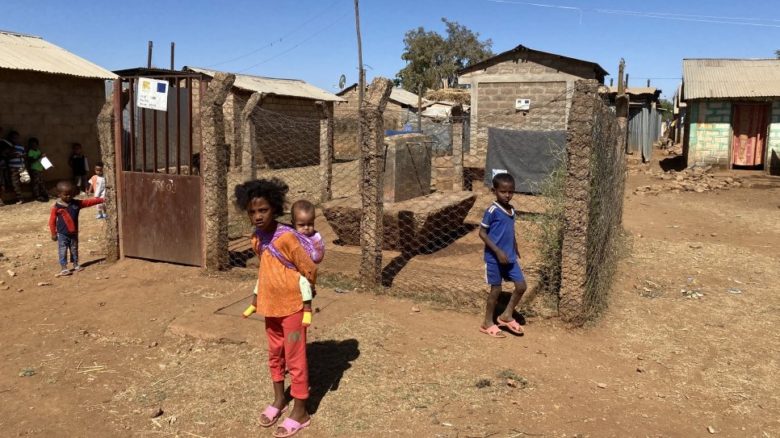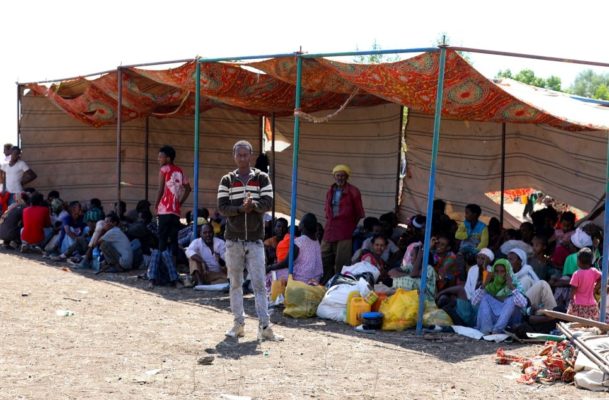
Children wait in front of a closed water station in Adi Harush refugee camp in northern Ethiopia. © UNHCR/Chris Melzer
UNHCR regains access to Adi Harush and Mai Aini camps while two other camps for Eritrean refugees remain cut off by the ongoing insecurity.
By Chris Melzer in Adi Harush camp, Ethiopia
Abraham is less apprehensive now that he has seen aid workers return to Adi Harush camp, after escalating violence in the Tigray region of Ethiopia forced humanitarian agencies to cease operations last November.
“When the aid workers left, we felt alone. It’s comforting to see UNHCR back,” says the Eritrean father of four, who has been a refugee in Ethiopia for the past four years.
He adds that the services offered by UNHCR, the UN Refugee Agency and other aid agencies before the temporary withdrawal gave them some hope.
“Back then, we knew that we were not forgotten. We had a school and a clinic – at least UNHCR tried to give us a future, even though it seemed so far away” he continues. “Life was not easy in the refugee camp but at least we felt safer.”
DONATE TO SUPPORT ETHIOPIAN REFUGEES
UNHCR staff pulled out of the camp in early November last year amid escalating conflict in Tigray that has driven over 58,000 civilians to seek refugee across the border in neighbouring Sudan. Hundreds of thousands more are displaced within Ethiopia and some areas remain inaccessible.
Richelle Haines, UNHCR’s Protection Officer based in Shire, in the Tigray region, recalls the day they had to leave Tigray.
“When we left, the people shrugged, as if to ask, ‘Why are you going? What happens now?’” says Haines who has worked in Ethiopia for over 10 years.
“Although it wasn’t a choice to leave, it felt like we were forsaking them. While this is my duty station, it has also become home and leaving meant leaving behind many dear friends,” she adds.
“When we left, the people shrugged, as if to ask, ‘Why are you going? What happens now?’”
Now, Haines and her colleagues are back, although for a short while until UNHCR receives authorization from the Government to fully return. As she moves through the camp and surrounding areas, she greets and chats with people easily in Amharic and Tigrinya.
“When we came back, they all made the same hand gestures, as if to say, ‘There you are at last!’” she says.
Some 96,000 Eritreans refugees – some who arrived just last year, others some 20 years ago – are registered in four UNHCR camps in the Tigray Region.
While UNHCR regained access to Adi Harush and Mai Aini camps, it has not yet had any access to the Shimelba and Hitsats refugee camps since the start of the law enforcement operation two months ago, despite repeated requests.
UNHCR remains concerned for the safety and wellbeing of the Eritrean refugees in those camps, who have been without any aid for many weeks.
In Adi Harush, refugees live in small huts stringed together, sometimes with a tiny pen for some chickens or a goat. Most built their houses by themselves, with fieldstones from the area. The result is a small, sometimes windowless hut, without water or electricity. But it is home for most and the refugees have felt safe here.
“That feeling is gone”, says Amanuel, another Eritrean living in Adi Harush. “At the beginning of the conflict, I thought food and clean water were our biggest problems. But now it is the security situation.”
Thankfully, Adi Harush and Mai Aini refugee camps were not directly impacted by the conflict. The camp infrastructure is largely intact, but robberies were common, especially at night and refugees could hear sounds of the military conflict. Some people had their mobile phones stolen, which for many, were their only valuable items and the only way to communicate with family back in Eritrea or elsewhere.
“We live in fear every night, that conflict will begin again. We fear thieves and looters taking advantage of the lack of law and order,” adds Amanuel.
Samuel, 36, agrees that life is hard. For over two months, he, and his family of six did not receive any food. The prices of items at the little marketplace have skyrocketed and the only water source is a river, a few minutes’ walk from the camp.
“Life in a refugee camp is hard,” says Samuel. “But now it is unbearable.”
He adds that the water from the river, more of a creek, is barely usable. The water is almost stagnant, muddy, and murky.
“It is just…not clean,” he says.
But they have no alternative, so refugees use that water for washing, cooking and even for drinking.
“My children need to drink water; we all need to drink. But if they drink this water, they will get diarrhoea. But what else can we do?” he asks.
Just before Christmas, together with the Ethiopian Government’s refugee agency, the World Food Programme and UNHCR delivered the first food aid to refugees in Adi Harush and Mai Aini. “A Christmas miracle,” some said.
“We will do everything we can to help. Now, more than ever.”
“We waited for you. Now, not everything is good, but it is looking better,” Abraham says. “The schools must be opened soon, and we hope for clean water. But most important is that we have safety and security again.”
UNHCR’s Haines recognizes Abraham’s hopeful sentiments.
“It will be hard work to realise these hopes,” she says. “But we will do everything we can to help. Now, more than ever.”
Originally published by UNHCR on 21 January 2021.





